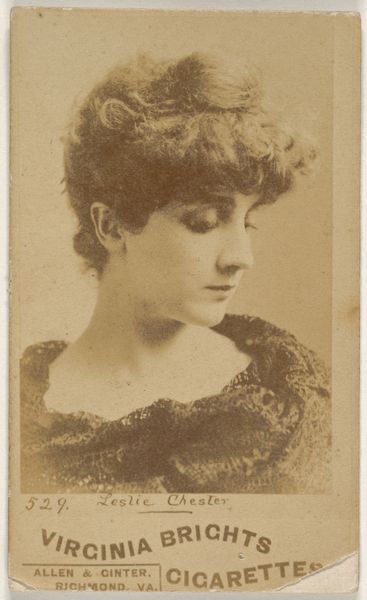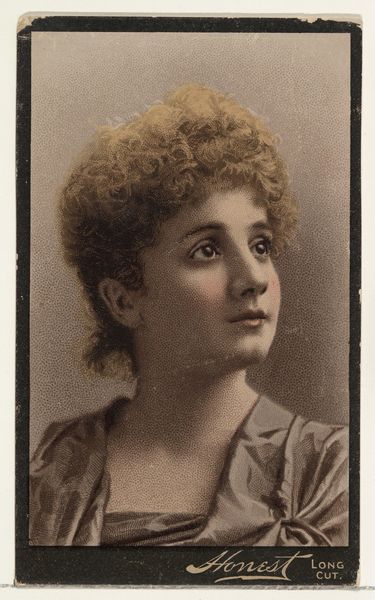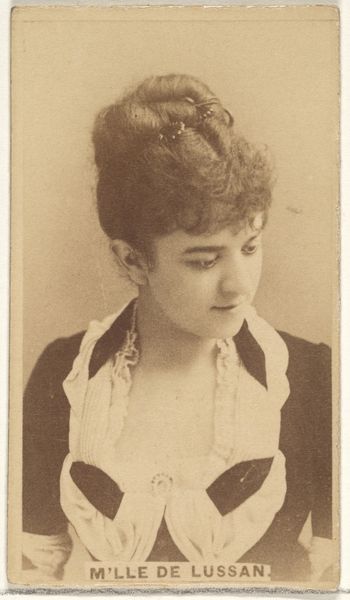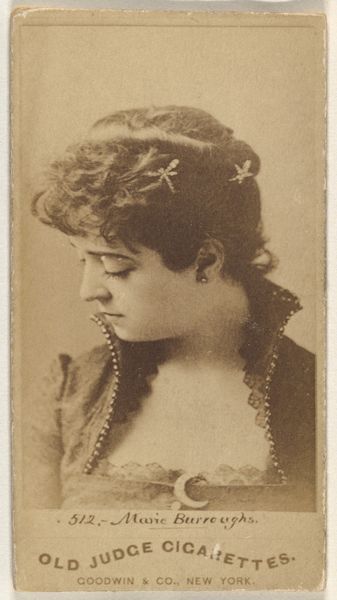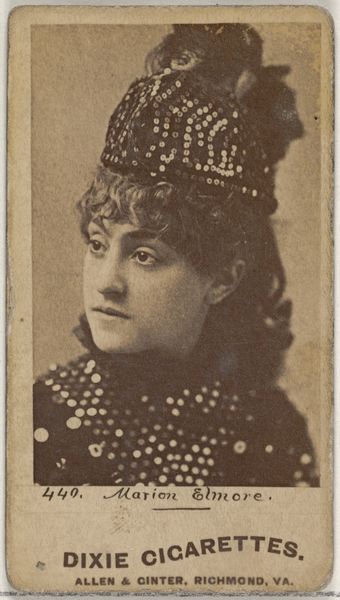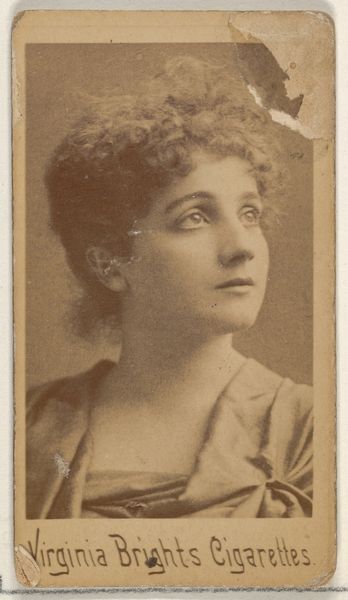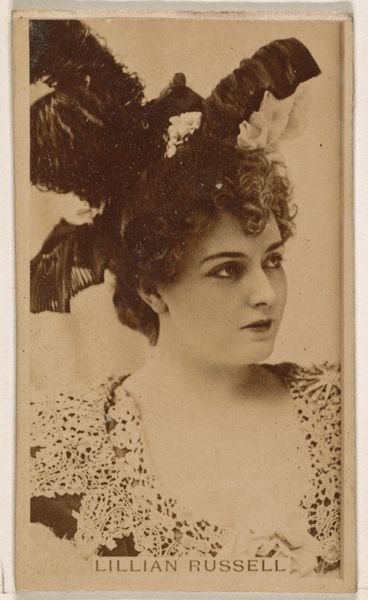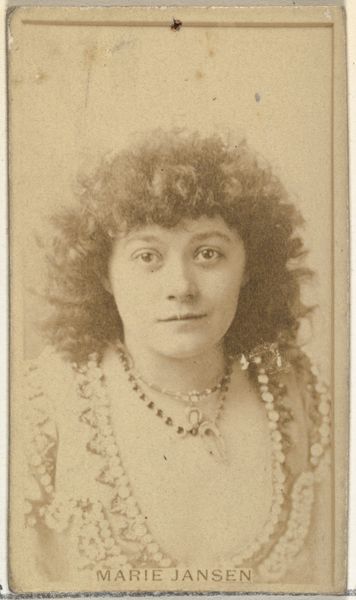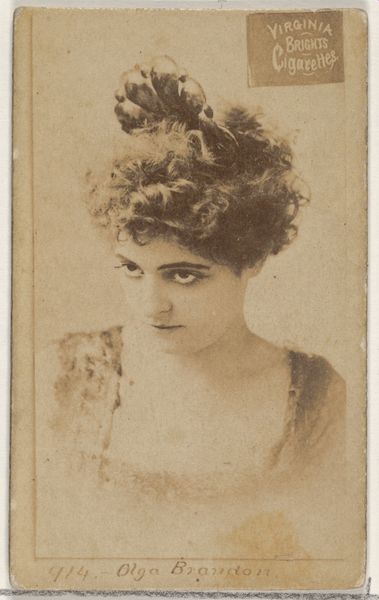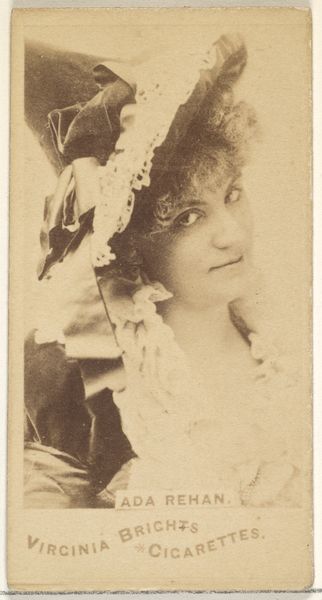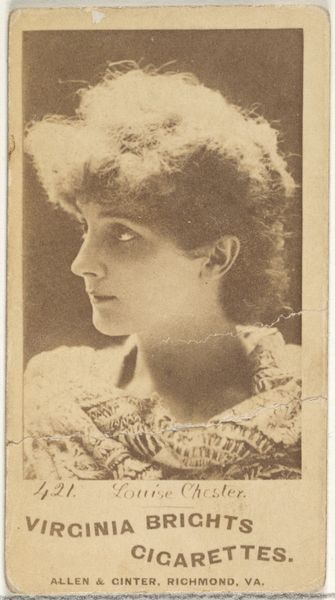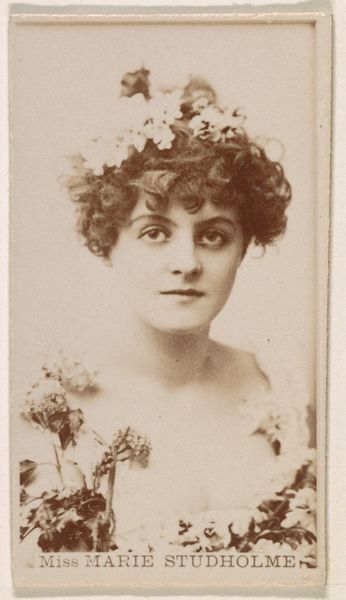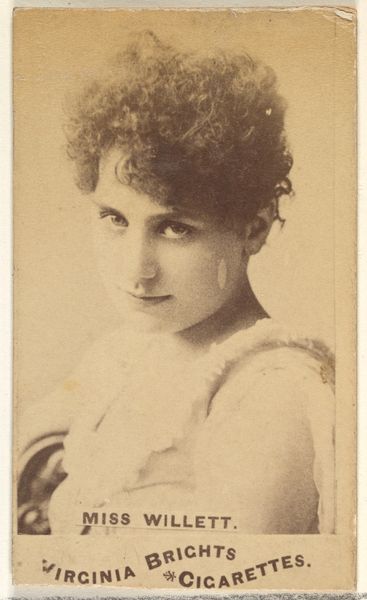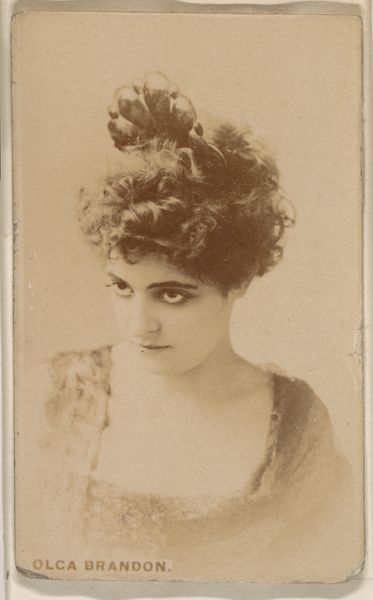
Dimensions: 3 1/4 x 5 5/8 in. (8.26 x 14.29 cm) (image)3 3/8 x 6 7/8 in. (8.57 x 17.46 cm) (mount)
Copyright: Public Domain
This is "Waldo," a hand-colored stereograph made by Jeremiah Gurney, a prominent New York photographer, sometime in the mid-19th century. Stereographs like this one were early forms of mass media. The image presents a fashionable woman, likely an actress or performer, in an elegant magenta dress with lace details. She is adorned with jewelry and her hair is styled in the elaborate fashion of the period. Gurney was known for his celebrity portraits, and this image reflects the growing culture of fame and spectacle in America at the time. Photography democratized portraiture, making images more accessible. Studios like Gurney's shaped the visual culture of the era by controlling who and what was seen. It is important to note that, like museums, photographic studios can reinforce social hierarchies, giving visibility to some people and not others. To understand this image more deeply, scholars consult studio records, period fashion plates, and social histories of photography. The meaning of art is always contingent on its social and institutional context.
Comments
minneapolisinstituteofart almost 2 years ago
⋮
These photographs are examples of a stereograph created by Jeremiah Gurney. A stereograph is made up of two images next to each other on a page. Just like humans have two eyes, a stereoscopic camera has two lenses. The camera makes two pictures that look similar, but are taken from slightly different perspectives. Then, the pictures are placed into a stereoscope viewer (see an example displayed in the case), and the image that the eyes see is three-dimensional. This feature made them popular, although they were more expensive to purchase.
Join the conversation
Join millions of artists and users on Artera today and experience the ultimate creative platform.
